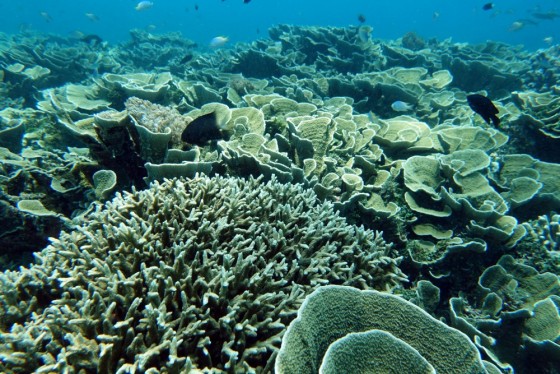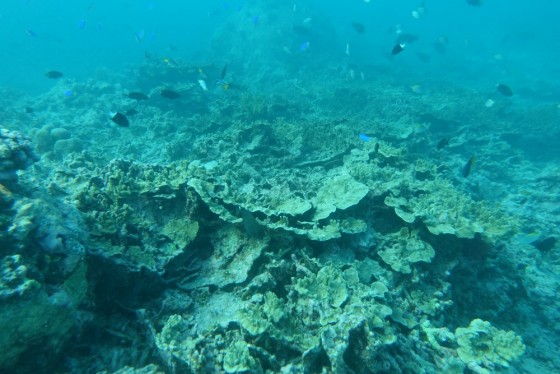Where
Who
James Gilmour (AIMS), Nicole Ryan (AIMS), Kylie Cook (AIMS), Ben Radford (AIMS), Mark Case (AIMS) and Taryn Foster (AIMS), Parks Australia.
When
Repeat surveys were completed in October 2016 and October/November 2017.
Why
Marine surveys at Ashmore Reef have shown that the reef’s coral communities differ to those at other reefs in the region and are affected differently by warmer-than-usual ocean temperatures that can cause coral bleaching. Coral communities were previously surveyed by AIMS in 2010 and 2011. In 2016, warm ocean temperatures lead to coral bleaching and coral death worldwide. Ashmore was not surveyed at this time, but bleaching was predicted for the region. Surveys were conducted in 2016 and again in 2017 to understand how the coral communities have changed over time, especially following high ocean temperatures in 2016 and 2017.
How
SCUBA divers carried out benthic surveys, photographing the sea floor and the marine life living there. Surveys were done at seven sites around Ashmore Reef in 2016, and again in 2017. At each site, two depths (3 metres and 6 metres) were surveyed. Divers laid out 50 metre transect measuring tapes, taking photographs every metre along each transect. This was repeated 5 times at each depth and site, so that the complex communities could be understood. After the surveys, 4370 images were analysed using a point-intercept sampling method where five fixed points are overlayed over each image and the benthic group under each point is identified and recorded.
What did we learn?
Benthic communities at Ashmore Reef have remained relatively stable since 2010, but coral cover has varied between years. Coral cover in 2016 (27 percent) was similar to 2011, but an estimated 10 percent of corals had died within the last year. Between the 2011 and 2016 surveys, four episodes of warm temperatures, potentially causing coral bleaching, were recorded. This gap between surveys makes it difficult to fully understand how the community has changed and what the potential impacts of these abnormal temperatures were. Coral cover declined by 33 percent between 2016 and 2017, but changes in the community varied among coral groups, sites and depths. The biggest declines occurred at the 3 metre depth and at the northern sites, and were mostly due to declines in the cover of tabulate, branching and foliose corals. These results, combined with higher than normal temperatures in April 2016 and the summer of 2016/17, suggest moderate levels of coral bleaching occurred at Ashmore Reef in 2016 and again in 2017.
What next?
These surveys provided important information on the current health of Ashmore Reef’s corals after bleaching events. In future, the establishment of a regular long-term monitoring program that is consistent with other oceanic reef systems will be valuable to understanding the changes in the coral communities over time, especially as coral reefs worldwide face the challenge of more warming and coral bleaching events associated with climate change. The next step will the development of a quantitative habitat model using remote sensing data as well as observations taken across the reef. This habitat model will be an important tool for managers and will allow us to understand changes on broader scales across the reef.
Related data and publications
Long-Term Monitoring Of Benthic Communities At Ashmore Reef 2016-2017 metadata record
For more information please contact marinescience@environment.gov.au.





